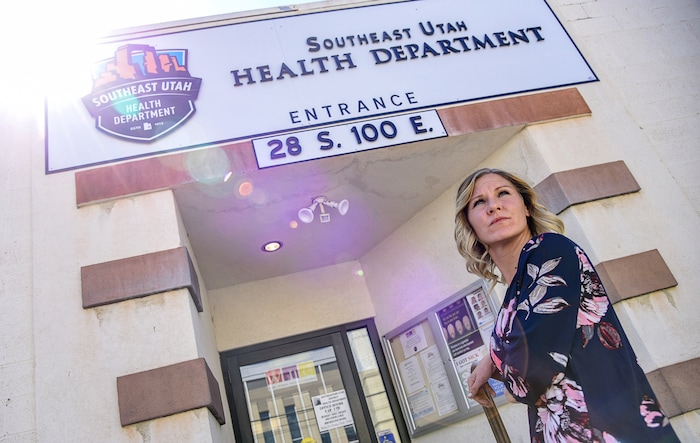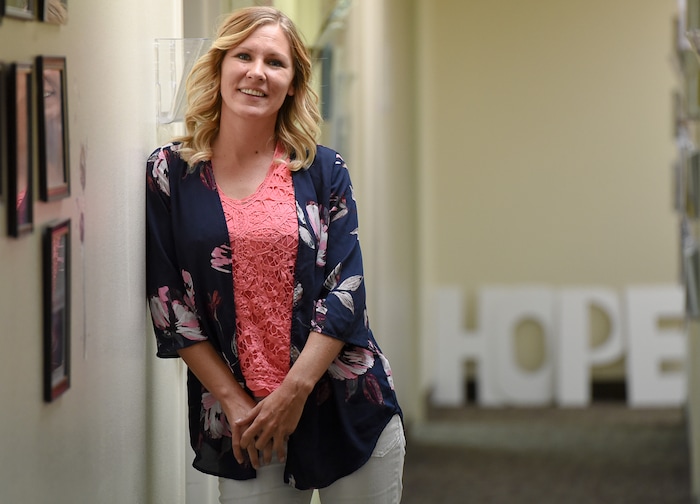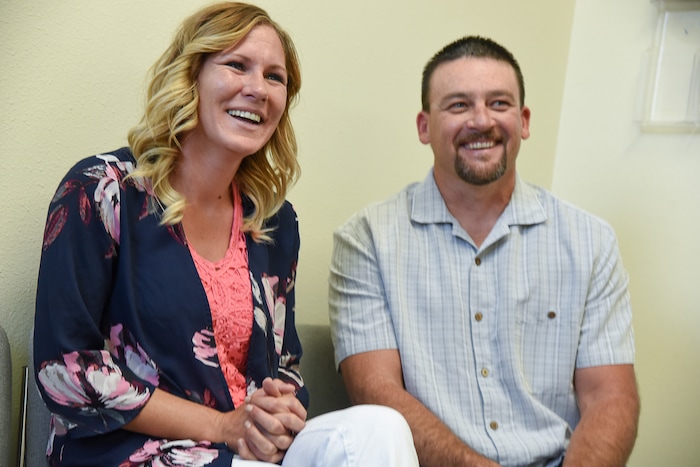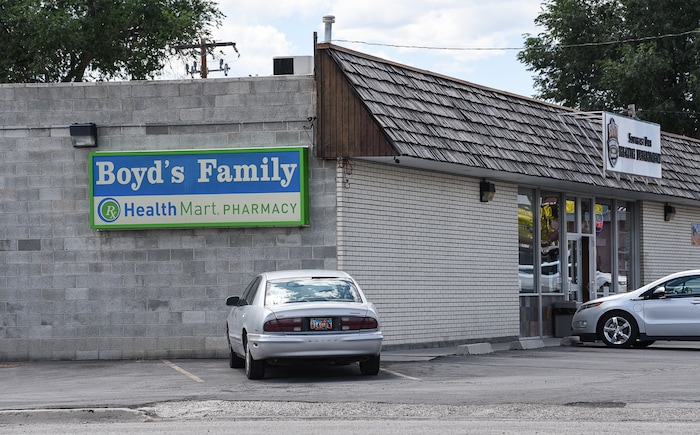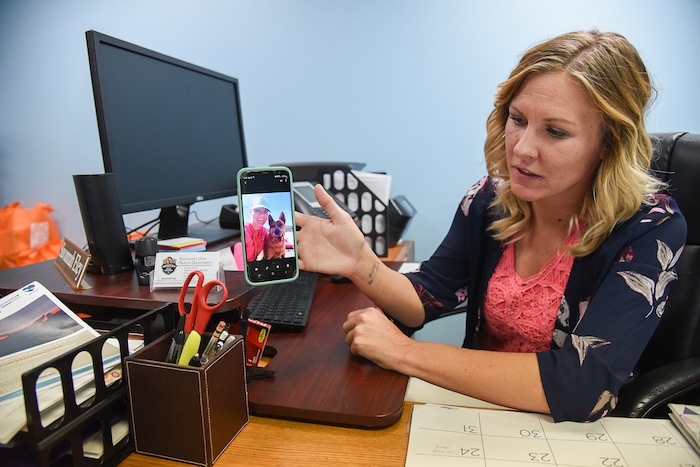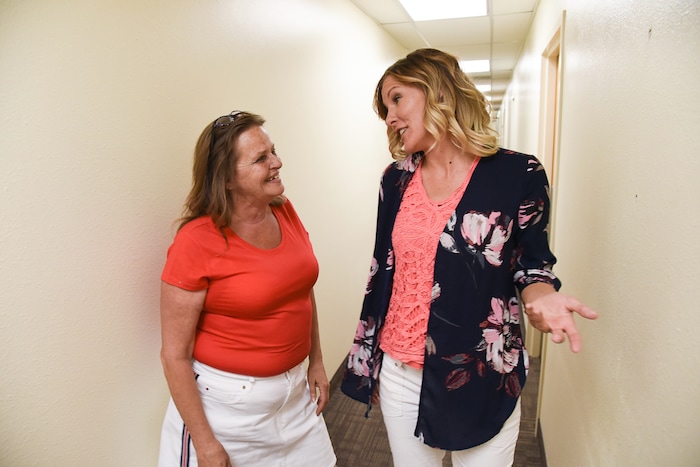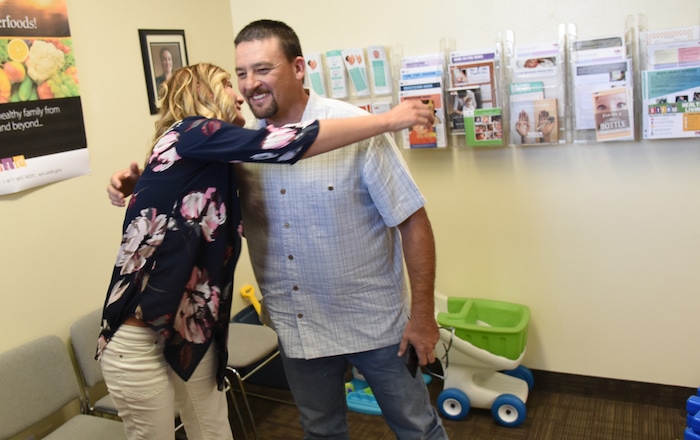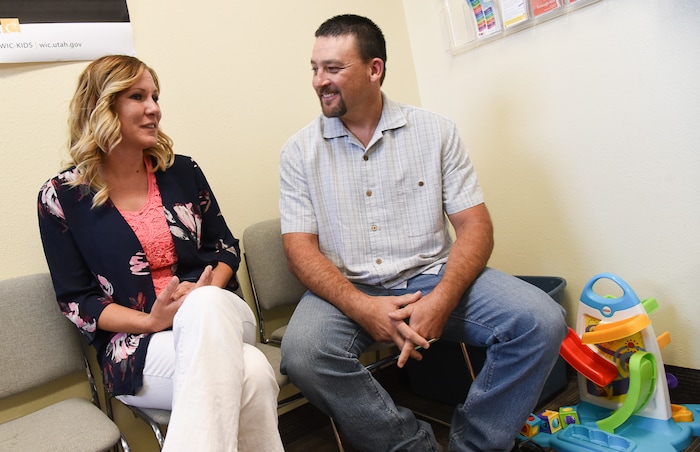Boyd’s Family Pharmacy in Castle Dale shares a cinder block building with regional health officials. Until this year, it was the only pharmacy in Emery County, which is home to about 11,000 people in Utah’s coal country.
But the small Main Street shop ordered 4.8 million oxycodone and hydrocodone pills to dispense from 2006 to 2012, according to data recently obtained by The Washington Post.
That’s the fourth highest number of pills delivered to more than 1,000 pharmacies statewide. It’s the only rural one in the top 10, a list dominated by pharmacies on the urban Wasatch Front and in southern Utah’s booming St. George.
Carbon County, Emery County’s neighbor, follows close behind, with stores in Price ranked 11th and 12th. The county’s 11 pharmacies together received over 15 million oxycodone and hydrocodone pills from 2006 to 2012 — enough for each resident to receive 105 pills per year.
That’s the highest per capita rate among all Utah counties, and rivals rates in some Virginia counties in the Appalachian mining region, according to an analysis by The Post. Emery County’s much lower rate — at 64.9 pills per resident per year — still ranked second in Utah.
Behind those high rates are families in Utah’s mining heartland who saw their loved ones and friends become dependent on the pills, addicted residents who searched for hard-to-find treatment, strapped parents who sometimes drained retirement funds to pay for it, and those who have grieved losses.
The death rate for Carbon County’s 20,000 residents, calculated from 2011 to 2016, rose to more than three times the state average, according to data compiled for the Utah Legislature last year.
“We just were so tired of looking at the obituaries every week when we were losing so many people to overdose deaths,” said Karen Dolan, CEO of Four Corners Community Behavioral Health, a nonprofit that provides mental health and substance abuse treatment in Carbon, Emery and Grand counties.
“Sometimes, some people say, well, that’s not comparable if we’ve lost 15 people in Carbon County and Salt Lake’s lost 150. Well, for a small town, [it] makes a huge difference.
“It’s just unbelievable,” Dolan said. “I think we’re a community in mourning.”
‘A perfect storm’
Carbon County, long reliant on mining, once prospered from its rich coal and oil reserves. But the heavy labor required by the industries takes a physical toll on many workers.
“You will break your body down before its time,” said Debbie Marvidikis, health promotion director of the Southeast Utah Health Department.
(Christopher Cherrington | The Salt Lake Tribune)
The acute need for pain treatments and a lack of access to alternative therapies contributed to the county’s opioid use, she said. “They were trying to take care of their health needs,” she said. “What they didn’t know was how addictive opioids are, and how dependent you can become on them in just a matter of a few weeks.”
Carbon County was flagged as early as 1999 for exceeding the state average for fatal opioid overdoses, Marvidikis said.
Former Emery County Sheriff’s Detective Garrett Conover saw the impact of the rising crisis in about 2004 and 2005, as street drug dealing increased along with the number of burglaries for prescription painkillers.
Opioid addiction did not discriminate, said Conover, who served on the county’s drug task force. “It was housewives. It was religious people. Anybody that had gone to a doctor or something ... became hooked on it because it’s so addictive.”
Whenever he had to face the body of a person lost to opioids, Conover said, he felt deeply frustrated. “It makes you want to work harder to ... try to get those drugs off the street to save the next person’s life."
The full scope of the region’s substance abuse problems became more apparent when the area started to lose its major employers, Marvidikis said. From 2010 to 2016, as an economic downturn hit, mines closed and jobs disappeared.
“You’re buying a house, you’re buying a car and a truck, you can send your babies to ballet or baseball … and then you lose that job. You lose that income,” Marvidikis said. “It just creates depression and ... untreated depression creates risk behaviors.”
(Christopher Cherrington | The Salt Lake Tribune)
The recession hit local communities with “social pain,” Dolan said. And the proximity of Carbon and Emery counties to Interstate 70 — a “major delivery route between Salt Lake and Denver” — makes drugs easier to find, she added.
“[It’s] just a kind of perfect storm for our area,” she said.
Carbon County had the highest opioid prescription rate in Utah every year between 2006 and 2017, hitting its peak in 2008 at 194.2 prescriptions for every 100 people, according to data from the Centers for Disease Control and Prevention.
Dolan said Emery County’s similar demand for pain relief was paired with “some pretty loose prescribing.”
She added: “I can't even understand how a county of 11,000 [people] can have 5 million pills ... in that few amount of years.”
Westin Winn, manager of Boyd's Family Pharmacy in Emery County, said being the county’s only pharmacy meant it had a larger population to serve, which contributed to its volume.
And some doctors in the area prioritized opioid treatments, he said, before learning how addictive they could be.
‘A very aggressive program’
Opioid prescriptions written in Utah are collected in the state’s Controlled Substance Database, which was established in 1995 and is monitored by the state Division of Occupational and Professional Licensing.
The division has moved against irresponsible prescribers, spokeswoman Jennifer Bolton said in a statement. It reprimands or suspends prescribers’ licenses when they “prescribe carelessly or otherwise in violation of the standards of care,” she said.
But the division did not track the exploding number of prescriptions in Emery and Carbon counties, she said, adding the state health department does such analysis.
Health officials, however, didn’t have the staffing or funding to calculate prescribing rates by county until last year, said Anna Fondario, manager of the health department’s Violence and Injury Prevention Program.
(Francisco Kjolseth | The Salt Lake Tribune) Traffic rolls past a billboard bringing attention to the opioid crisis along U.S. Route 191 in Carbon County where 93 people have died to opioid overdose between 2000 and 2018, according to data from the Utah Department of Health.
Pharmaceutical companies had promised in the late 1990s that opioid pain relievers would not cause addiction, leading health providers to prescribe opioids at higher rates, according to the U.S. Department of Health and Human Services.
Nationally, over 76 billion prescription pain pills flooded the country between 2006 and 2012, The Post’s analysis shows. Almost 700 million of them came to Utah. And The Post’s database, based on figures it obtained from the Drug Enforcement Administration, doesn’t show all the opioids that reached the state. It tracks oxycodone and hydrocodone — two drugs that account for about 75% of the total opioid pill shipments to pharmacies.
The data was released after a legal challenge by The Post and the owner of the Charleston Gazette-Mail in West Virginia.
Many of the industry’s giants now are blamed for fueling the opioid epidemic that killed almost 400,000 people nationwide between 1999 and 2017, according to the CDC. At least 20 Utah counties and the state have filed claims against opioid manufacturers.
The drug companies defend their sales, often pointing out they were providing legal painkillers and blaming overprescribing physicians, unquestioning pharmacies and other factors.
The Utah market was dominated by two of the nation’s biggest drug distributors, McKesson Corp. and AmerisourceBergen Drug, according to The Post data. McKesson has denied wrongdoing and told The Post: “Any suggestion that McKesson influenced the volume of opioids prescribed or consumed in this country would reflect a misunderstanding of our role as a distributor.”
In Emery County, Boyd’s Family Pharmacy is a Health Mart store — a franchise program run by McKesson.
(Francisco Kjolseth | The Salt Lake Tribune) Boyd's Family Pharmacy in Castle Dale, a city with a population just shy of 2,000, was until recently the only pharmacy in Emery County. It received 4.8 million oxycodone and hydrocodone pills between 2006 and 2012, the fourth highest total among more than 1,000 pharmacies and providers in the state, according to analysis by The Washington Post.
From what she saw in southeastern Utah, Marvidikis said, “[The companies] had a very aggressive program to promote opioids to physicians. I think that ... misled a lot of our providers, misled a lot of our residents.”
Emery County saw at least 38 opioid overdose deaths between 2000 and 2018, according to the Utah Department of Health, with 32 fatal overdoses after 2006.
Carbon County lost 93 people to opioid overdoses in the same period, according to the data. Because 2018 counts are preliminary, the numbers could rise.
“We’ve lost so many people," Dolan said. "Every single person living in Carbon County knows someone that’s died.”
‘Success is marginal’
From 2001 to 2018, just shy of 6,000 Utahns died from opioid overdoses, according to state data. The Legislature has funded statewide awareness campaigns about the dangers of opioids, and the state Department of Health developed a set of guidelines to encourage proper prescribing.
Prescribers are now required to go through trainings and use the state’s Controlled Substance Database to identify suspicious requests for prescription drugs. Since 2016, pharmacists have been allowed to hand out naloxone — a drug that reverses the impact of opiates — to anyone at risk of an overdose, without a prescription.
But for years, state lawmakers did not provide significant dollars for treatment. Even in Salt Lake County, where most treatment resources are concentrated, there was no major expansion until two years ago, said Tim Whalen, director of the county’s Division of Behavioral Health Services.
In 2017, Utah received its first federal grant to fund treatment, he said. The state Medicaid expansion that year, which extended coverage to targeted adults, allowed Salt Lake County to offer 280 more residential beds to treat drug addictions, Whalen said.
Funding for resources in Carbon and Emery counties, however, remains scarce. The regional health department got its first state grant to specifically fund opioid overdose prevention in 2016, Marvidikis said. Last year, state lawmakers appropriated money to add two full-time employees at the department to work on suicide and opioid overdose prevention, she said.
The number of opioid prescriptions filled at Boyd’s in Emery County has dropped in recent years, after certain prescribers left and the store adopted more stringent rules on refills, Winn said. And area residents can now get assessments for addiction, outpatient care and medication-assisted treatment in clinics, although some of those options only recently came to Carbon County.
(Francisco Kjolseth | The Salt Lake Tribune) Traffic rolls past a billboard bringing attention to the opioid crisis along U.S. Route 191 in Carbon County where 93 people have died to opioid overdose between 2000 and 2018, according to data from the Utah Department of Health.
However, there’s no inpatient treatment or detoxification center in either county. Those in need of residential recovery have to travel “over the hill” to other counties where long waiting lists often await, Marvidikis said. “Who knows if they’ll live through that?”
And health insurance doesn’t always cover the cost, Dolan said. “I’ve seen families cash in their whole 401(k) trying to pay for their loved one to get care."
Even for those with sufficient resources, the stigma of drug addiction can thwart people from seeking help, especially in rural areas where “everyone’s so interconnected,” said Ashley Yaugher, founder of the Carbon & Emery Opioid & Substance Use Coalition.
“One of the biggest things that is a barrier is ... people not wanting to appear like they have a problem,” Yaugher said.
Withdrawal itself is a difficult hurdle, said Carbon County Commissioner Larry Jensen. Even for people getting help from local coalitions, he said, relapse can be common.
“Mostly, these folks continue to get caught back in the cycle of it,” Jensen said. “The success is marginal. But that’s really all we can do.”
‘Moving through the crisis’
Savannah Eley took her first Percocet in December 2007, borrowing the pain pill from her then-husband. Ashamed of her postpartum depression, she was trying to treat it on her own.
“At first, I thought it changed my life in such a wonderful way,” said Eley, now 31 and living in the Emery County town of Cleveland. “I had energy to be the mom that I was daydreaming of being when I was pregnant with my daughter.”
(Francisco Kjolseth | The Salt Lake Tribune) Savannah Eley visits Emery County Sheriff's Detective John Barnett, one of two officers who helped turn her life around. Now two and a half years clean, Eley helps others recover from addiction as an opioid prevention specialist at the Southeast Utah Health Department in Price.
But she eventually needed “500 milligrams of oxycodone a day just to feel normal,” she said.
After seven years of addiction, she tried to get clean. Her treatment options were limited without insurance coverage, she said, and “that mental, physical and emotional pain brings you back to using in no time.”
Eley said she tried switching to amphetamines, but that led to her using a mix of meth, opiates and Xanax. She attempted suicide twice in 2017, she said. “I was just so disappointed where my life had went.”
What turned her around, Eley said, was meeting Conover and another detective, John Barnett, from the Emery County Sheriff’s Office, after her concerned brother introduced them.
“They gave me such a reality check ... wrapped in compassion," she said, "that it ended up changing my life and being that positive push in the right direction.”
Barnett invited her to call whenever she felt like using. She remembers him telling her, “What is lost can always be found.”
He helped connect her to treatment. Now 2½ years clean, Eley helps others recover as a peer support specialist at the Southeast Utah Health Department.
“I just love seeing people succeed ... so then you can show everybody: ‘Hey, we do recover.’ And we can live these wonderful lives,’" Eley said.
People have become more aware of the hazards of opioids, Marvidikis said, but gaps remain. “I’m very surprised that here, 2019, that our community still doesn’t know what an opioid is,” she said. “So they’ll say: ‘Oh, I just take tramadol,’” which is an opioid painkiller.
But one effort by the regional health department is making a clear difference, she said. In 2016, it began handing out free naloxone kits and training residents to use the drug to reverse the effects of an opioid overdose.
“With our Narcan (naloxone) program, we’ve had 62 known saves in the past couple of years,” Marvidikis said. “For us, that’s 62 death certificates we didn’t have to print.
“It’s part of the fence that we’re trying to build around Carbon County."
More remains to be done, Marvidikis said, and she’s hoping for more help from treatment providers and state funding.
“What I want people to know is that we’re moving through this crisis,” she said. “Can we do better? Sure. And will we do better? Yes.”
